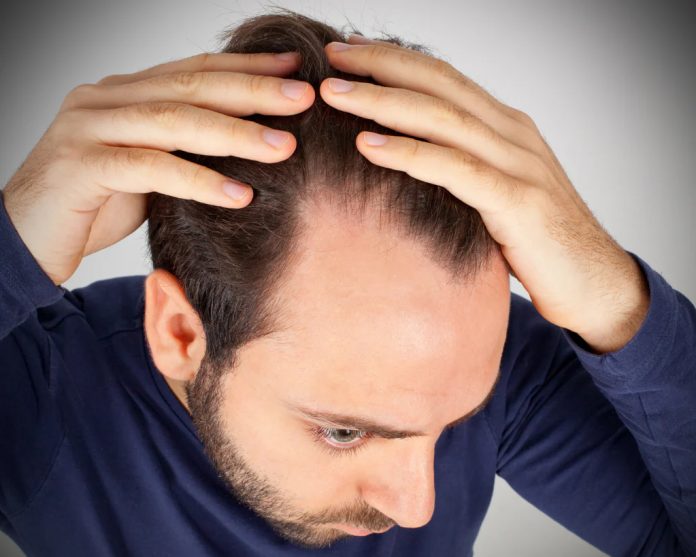What Is Hair Loss?
Hair loss can happen to anyone. Your genes, certain medical conditions, treatments for disease, and other factors can contribute to partial or, sometimes, total hair loss — not just on your head but on other parts of your body as well. Just as the types and causes of hair loss vary, so do the reactions of the many people who experience it.
Doctors don’t know why certain hair follicles are programmed to have a shorter growth period than others. But several factors may influence hair loss, such as:
Hormones. Hormonal imbalance, such as abnormal levels of androgens (male hormones normally produced by both men and women), may lead to hair loss.
Genes. Genes from both male and female parents may influence a person’s predisposition to male or female pattern baldness.
Stress, illness, and childbirth. These can cause temporary hair loss. Ringworm, caused by a fungal infection, can also cause hair loss.
Drugs. Drugs, including chemotherapy drugs used in cancer treatment, blood thinners, beta-adrenergic blockers used to control blood pressure, and birth control pills, can cause temporary hair loss.
Burns, injuries, and X-rays. These can cause temporary hair loss. In such cases, normal hair growth usually returns once the injury heals, unless a scar is produced. Then, hair will never regrow.
Autoimmune disease. This may cause alopecia areata. In alopecia areata, the immune system becomes more active for unknown reasons and affects the hair follicles. In most people with alopecia areata, the hair grows back, although it may temporarily be very fine and possibly a lighter color before normal coloration and thickness return.
Cosmetic procedures. Procedures such as shampooing too often, perms, bleaching, and dyeing hair can contribute to overall hair thinning by making hair weak and brittle. Tight braiding, using rollers or hot curlers, and running hair picks through tight curls can also damage and break hair. But these procedures don’t cause baldness. In most cases, hair grows back normally if the source of the problem is addressed. Still, severe damage to the hair or scalp sometimes causes permanent bald patches.
Medical conditions. Thyroid disease, lupus, diabetes, iron deficiency anemia, eating disorders, and anemia can cause hair loss. Most times, when the underlying condition is treated, the hair will return unless there is scarring as in some forms of lupus, lichen planus, or follicular disorders.
Diet. A low-protein diet or severely calorie-restricted diet can also cause temporary hair loss.
Vitamin deficiencies. Deficiencies in vitamins A, B, C, D, and E, as well as iron and zinc, have been associated with hair loss.
Signs of Hair Loss
Hair loss can be subtle and happen over a long period; it also can occur suddenly. The signs of hair loss depend on its causes and so does how you perceive your hair loss. These signs include:
Gradual thinning of hair on the top of your head. This occurs as a result of pattern baldness, the most common type of hair loss. In men and people assigned male at birth (AMAB), this thinning typically begins at the hairline. In women and people assigned female at birth (AFAB), the thinning frequently occurs where they part their hair, but their hair also commonly thins at the hairline.
Sudden hair loss, rather than gradual thinning, also can occur for a variety of reasons, such as alopecia areata and medical treatments, such as chemotherapy.
Patchy bald spots (which are often round or oval in shape) are signs of alopecia areata, which can develop suddenly. Such patches may be large or small, and they can develop on your beard, eyelashes, and eyebrows. Most of the time, alopecia areata does not cause widespread hair loss over your entire head. But it’s possible to lose all the hair on your head and, very rarely, the rest of your body.
Shedding,which can cause your hair to thin, can occur a few months after stressful or hormone-altering events, such as childbirth, illness, a divorce, or the death of a loved one. Some medications and nutritional deficiencies also may be to blame for this condition called telogen effluvium. You’ll likely notice a greater than normal amount of hair in your brush as your hair rapidly sheds.
Losing all the hair on your body can happen due to chemotherapy. The hair usually grows back after treatment ends.
Credit: webmd










